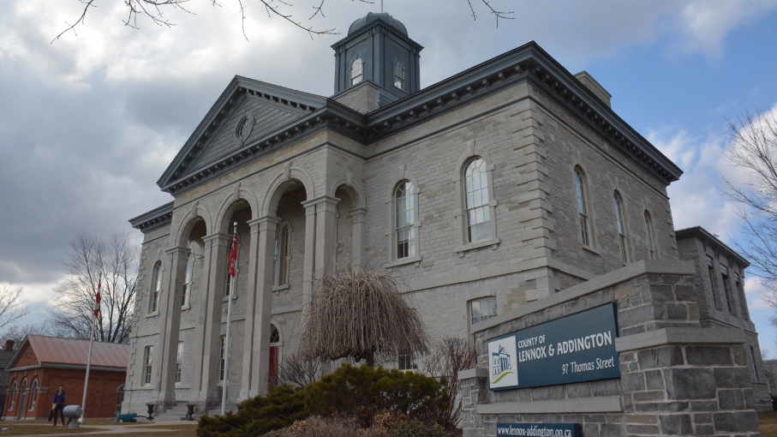Adam Bramburger
Beaver Staff
Lennox and Addington County’s representatives on the Eastern Ontario Wardens’ Caucus are optimistic a $213-million project to address the region’s cellular communications gap is still on Ontario’s radar.
At council’s working group meeting last Wednesday, Warden Bill Lowry and chief administrative officer Brenda Orchard spoke favourably about the Eastern Ontario Regional Network (EORN) project’s chances of moving forward under the new Progressive Conservative government.
Councillor Gord Schermerhorn, of Greater Napanee, said he got a little concerned recently when hearing Premier Doug Ford say “the cupboard was bare.” He wondered whether the province’s financial situation might put a hold on the partnership, which includes investment from three levels of government and the private sector.
Orchard said the money is already committed provincially.
“We’re solid with the Province, we’re just waiting for the feds. Our last ask to the Province was to nominate it to the federal program,” Orchard said.
Lowry said he had heard some concern, possibly spearheaded by Minister of Agriculture, Food and Rural Affairs Ernie Hardeman, that western Ontario receive similar funding for communications infrastructure as eastern Ontario.
“Whatever they decide to do, it’s going to be difficult for them as a party to leave out western Ontario and just give it to eastern Ontario,” Lowry said. “That really bothered us because of the amount of leg work that’s been done by our staff and how hard we’ve been working on it — but I can understand Ernie saying that because he’s a politician, that’s his background and he can’t stand back and see one part of the province get it.”
Orchard said the EOWC has countered that argument by suggesting they have a shovel-ready project in eastern Ontario and the region has already proven it can deliver with a $175-million broadband project in 2010 that gave 89 per cent of the region connectivity speeds of 10 Mbps or better.
“Our argument to that is that we’re ready to go in the east and we can be the template they use in the north and west and other places,” she said. “In the east, you have a record of being able to execute.”
Lowry said in meetings with the Progressive Conservatives and their Liberal predecessors in recent years, officials have been impressed with how the municipalities have worked together for a common cause.
“They can’t believe we all get along. That’s something so simple, but it’s where we seem to get our credibility.”
Lowry also said it’s important to remember the cellular gap project isn’t just about the luxury of increased personal use of mobile devices. The main sales pitch for the project has been emergency services and improved communications for responders. Beyond that, he said economic development was a close second.
“There’s so many people now that can work out of their house, move from Toronto, and move to rural areas, but they don’t have the capacity for communicating,” he said.
According to EORN, is estimated upgraded service in eastern Ontario could lead to as many as 3,000 jobs in the region.
Orchard added Quebec has been pushing hard for faster upload and download speeds in two years and neighbouring American states have done likewise. Competition is a factor.
“The fact that we need to compete is resonating,” she said. “I think the province wants to have a success story, they want to have it in and we’re the best one to bet on because we have the track record on broadband.”
Of the $213 million, the proposal calls for both the federal and provincial governments to contribute $71 million each. Municipalities will collectively add $10.1 million and the private sector will contribute the $61-million balance. The project will see upgraded and additional towers and fibre lines.
In May, Lennox and Addington County approved spending up to $567,517 on the cellular gap project and an additional $40,000 to study ways the region could reach the Canadian Radio-television Telecommunications Commission’s goal of providing speeds of 50 Mbps for downloads and 10 Mbps for uploads by 2021.
Stone Mills councillor John Wise said his constituents are hoping to see the work progress.
“This was certainly an issue in the elections in our township. Large areas of our township are dead zones,” he said.

